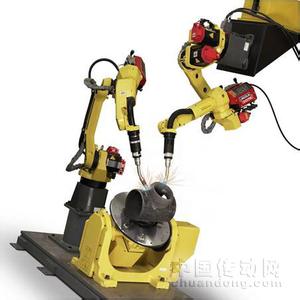项目名称: 面向机器人的Spiking神经网络小储备池计算理论及其应用研究
项目编号: No.61473051
项目类型: 面上项目
立项/批准年度: 2015
项目学科: 自动化技术、计算机技术
项目作者: 薛方正
作者单位: 重庆大学
项目金额: 80万元
中文摘要: 机器人应用的迅猛发展对人工神经网络等机器人系统设计工具提出了越来越高的要求,但作为第三代神经网络并在机器人领域具有很好前景的Spiking神经网络(SNN)却没有得到广泛应用。本项目围绕这一问题,以SNN的储备池计算模型为切入点,开展从模型研究到典型机器人应用,再到SNN工具箱的应用基础研究。通过分析SNN在机器人领域的优势与挑战,提出小储备池的概念,并以此为核心,研究小储备池SNN的神经元模型构建、储备池拓扑结构构建等一系列问题,进而构建具有最优性能和最小规模的计算模型。以机理研究和统计分析为指导,以拓扑优化、参数优化等为手段,以信息墒、精度等为指标,设计多机制综合多目标优化方法,获得适合目标任务的Spiking神经网络。同时,以多任务机器人和复杂环境中的自主机器人以代表,研究其在复杂机器人上的应用,进而设计并实现出该类方法的工具体系。
中文关键词: 智能机器人;机器人控制;人工神经网络;脉冲神经网络;储备池计算
英文摘要: The rapid development of robotic applications makes increasing demands of robot system design tools such as artificial neural networks. But as the third generation of neural network and has good prospects in the field of robotics, Spiking Neural Network (SNN) has not been widely used. On this issue, this project aims to carry out research from the modeling study, then the application of typical robot, and finally into the basic research of SNN toolbox, with the application of reservoir computing of SNN as a starting point. By analyzing the advantages and challenges of SNN in the field of robotics, we propose the concept of small reservoir which serves as a core, study a series of questions such as, the modeling of SNN with small reservoir, the construction of reservoir topology, and then build computational model with the optimal performance and the smallest size. With the guidance of mechanism research and statistical analysis, the method of optimization of topology and parameter, the index of information entropy and accuracy, we plans to design a method with multi-mechanism integration and multi-objective optimization, to obtain suitable spiking neural networks for specific target task. In addition, with the representation of multi-task robots and autonomous robots in complex environments, we also investigate the application of complex robot, and finally design and implement a tool system of such methods.
英文关键词: intelligent robot;robot control;artificial neural network;Spiking neural network;reservoir computing


